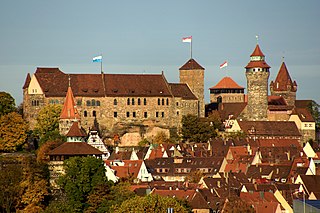
Nuremberg is the largest city in Franconia, the second-largest city in the German state of Bavaria, and its 545,000 inhabitants make it the 14th-largest city in Germany.

The House of Wittelsbach is a former Bavarian dynasty, with branches that have ruled over territories including the Electorate of Bavaria, the Electoral Palatinate, the Electorate of Cologne, Holland, Zeeland, Sweden, Denmark, Norway, Hungary, Bohemia, and Greece. Their ancestral lands of Bavaria and the Palatinate were prince-electorates, and the family had three of its members elected emperors and kings of the Holy Roman Empire. They ruled over the Kingdom of Bavaria which was created in 1805 and continued to exist until 1918.
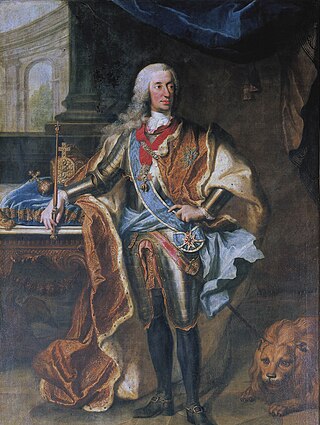
Charles VII was Prince-Elector of Bavaria from 26 February 1726 and Holy Roman Emperor from 24 January 1742 to his death. He was also King of Bohemia from 1741 to 1743. Charles was a member of the House of Wittelsbach, and his reign as Holy Roman Emperor thus marked the end of three centuries of uninterrupted Habsburg imperial rule, although he was related to the Habsburgs by both blood and marriage.
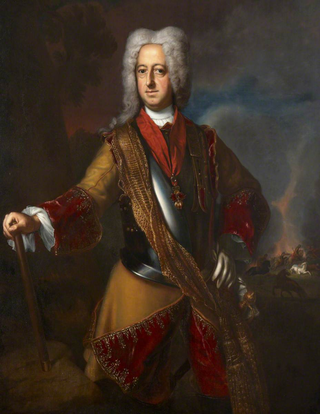
Maximilian II, also known as Max Emanuel or Maximilian Emanuel, was a Wittelsbach ruler of Bavaria and a Prince-elector of the Holy Roman Empire. He was also the last governor of the Spanish Netherlands and Duke of Luxembourg. An able soldier, his ambition led to conflicts that limited his ultimate dynastic achievements.

The Nuremberg Palace of Justice(German: Justizpalast) is a building complex in Nuremberg, Bavaria, Germany. It was constructed from 1909 to 1916 and houses the appellate court (Oberlandesgericht), the regional court (Landgericht), the local court (Amtsgericht) and the public prosecutor's office (Staatsanwaltschaft). The Nuremberg Trials Memorial is located on the top floor of the courthouse. The International Nuremberg Principles Academy is housed on the ground floor of the east wing since 2020.

Franz Joseph Strauss was a German musician. He was a composer, a virtuoso horn player and accomplished performer on the guitar, clarinet and viola. He was principal horn player of the Bavarian Court Opera for more than 40 years, a teacher at the Royal School of Music, Munich, and a conductor.
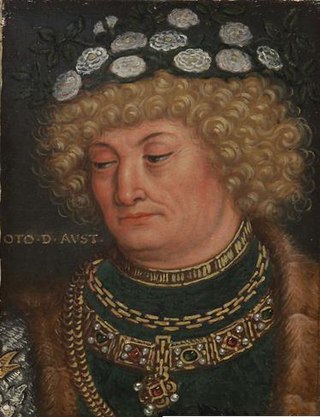
Otto, known as the Merry, was Duke of Austria and Styria from 1330, as well as Duke of Carinthia from 1335 until his death. A member of the House of Habsburg, he ruled jointly with his elder brother Duke Albert II.

Johann Wilhelm II, Elector Palatine of the Wittelsbach dynasty was Elector Palatine (1690–1716), Duke of Neuburg (1690–1716), Duke of Jülich and Berg (1679–1716), and Duke of Upper Palatinate and Cham (1707–1714). From 1697 onwards Johann Wilhelm was also Count of Megen.
Duke John II of Bavaria-Munich, , since 1375 Duke of Bavaria-Munich. He was the third son of Stephen II and Elizabeth of Sicily.

The Duchy of Palatinate-Zweibrücken was a duchy of the Holy Roman Empire with full voting rights to the Reichstag. Its capital was Zweibrücken. The reigning house, a branch of the Wittelsbach dynasty, was also the Royal House of Sweden from 1654 to 1720.
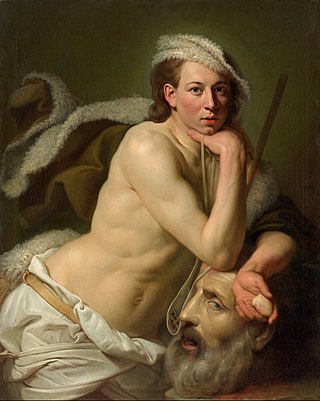
Johan Joseph Zoffany was a German neoclassical painter who was active mainly in England, Italy and India. His works appear in many prominent British collections, including the National Gallery, the Tate Gallery and the Royal Collection, as well as institutions in continental Europe, India, the United States and Australia. His name is sometimes spelled Zoffani or Zauffelij.
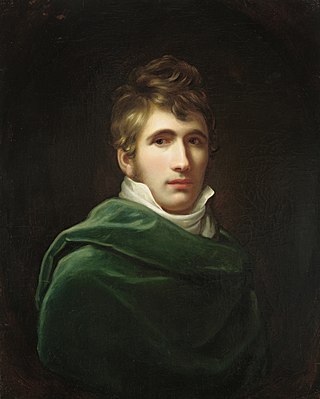
Joseph Karl Stieler was a German painter. From 1820 until 1855 he worked as royal court painter for the Bavarian kings. He is known for his Neoclassical portraits, especially for the Gallery of Beauties at Nymphenburg Palace in Munich, as well as his emblematic portrait of Ludwig van Beethoven, which has become one of his most famous works.

The Frankenthal Porcelain Factory was one of the greatest porcelain manufacturers of Germany and operated in Frankenthal in the Rhineland-Palatinate between 1755 and 1799. From the start they made hard-paste porcelain, and produced both figurines and dishware of very high quality, somewhat reflecting in style the French origin of the business, especially in their floral painting. Initially they were a private business, but from 1761 were owned by the local ruler, like most German porcelain factories of the period.
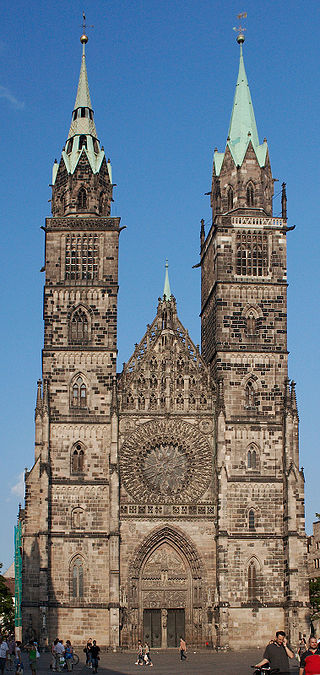
St. Lorenz is a medieval church of the former free imperial city of Nuremberg in southern Germany. It is dedicated to Saint Lawrence. The church was badly damaged during the Second World War and later restored. It is one of the most prominent churches of the Evangelical Lutheran Church in Bavaria.
Brothers Lewandowski, sons of Jakob Lewandowski with the headquarter in Berlin produced in 1871 fabrics with own production facilities and more than 56 shops.
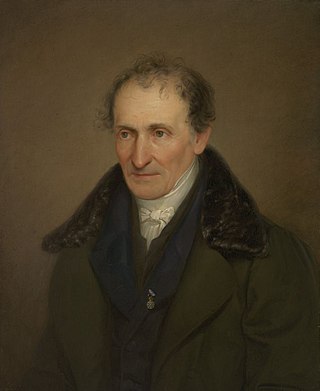
Johann Georg von Dillis was a German painter.
Ottmar Ostermayr was a German film producer. He was the brother of Franz Osten and Peter Ostermayr. From 1911 until 1914 he worked for Vienna subsidiary of the French company Eclair. In the 1920s he set up a production company with the film pioneer Oskar Messter. He was later employed at the Munich-based Bavaria Film which had been set up by his brother Peter.
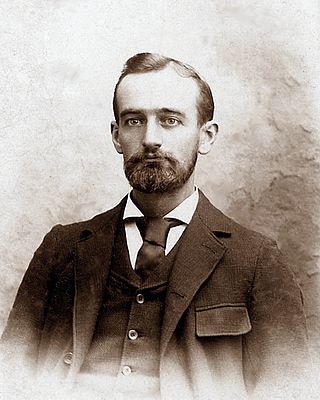
Frederick Trump was a German-born American barber and businessman. He was the patriarch of the Trump family and the paternal grandfather of Donald Trump, the 45th president of the United States.
Georg Leykauf was a steel metalware producer and trader in Nuremberg, Bavaria.
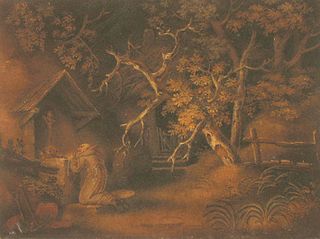
Benjamin Zobel was a German-British painter, who developed the technique of sandpainting, also called marmotinto. Examples of these sandpaintings exist in the Memmingen city museum archives in Germany, the Victoria and Albert Museum in London, and Dundurn Castle in Hamilton, Ontario.
















